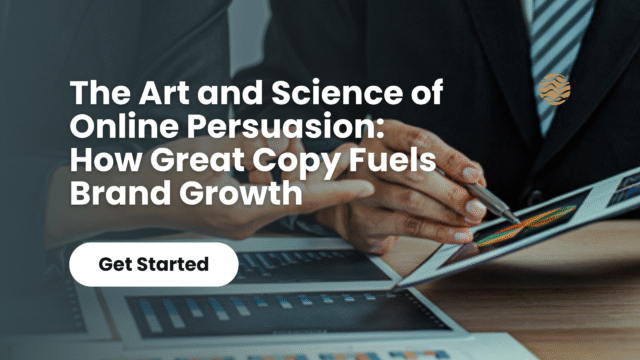Introduction: In a Sea of Content, Only the Best Words Win
In the digital age, attention is both currency and commodity. Millions of words flood the internet daily, yet only a fraction are read, remembered, or acted upon. What separates content that ranks and converts from the rest? It’s not just keyword density or backlinks—it’s strategic storytelling fused with persuasive clarity.
This is where SEO copywriting services shine. They don’t just get you noticed in search engines—they help you speak your customer’s language, answer their questions, and win their trust.
Why Your Copy Needs to Wear Two Hats: Technical and Emotional
Think of your website content as a bridge. One side is structured for search engines—optimized headings, metadata, and semantic keywords. The other side must appeal to human readers through empathy, authority, and value. Get either side wrong, and the bridge collapses.
Great copywriters understand both disciplines. They optimize for search intent and buyer psychology, guiding users from curiosity to conversion.
What Makes Online Copy Truly Persuasive?
1. Clarity Over Cleverness
Fancy words may impress, but they rarely convert. Clarity ensures your value is immediately understood.
2. Emotional Resonance
Users remember stories, not slogans. Emotionally compelling narratives drive connection and action.
3. Strategic Keyword Integration
Keywords should support—not disrupt—the reading experience. Effective content flows naturally while aligning with high-intent search terms.
4. Structure That Guides the Eye
Scannability, bullet points, headers, and spacing all contribute to how content is consumed.
5. Voice and Tone Consistency
Consistency in tone across touchpoints builds brand familiarity. A formal whitepaper tone shouldn’t clash with a playful Instagram voice. The best brands find a tone that reflects their mission—and stick with it.
6. Psychology-Driven CTAs
Calls to action that tap into urgency, exclusivity, or simplicity drive results. Examples include “Claim Your Offer,” “Join 10,000+ Subscribers,” or “Try It Risk-Free Today.”
Trust Signals Embedded in Great Copy
A polished article or landing page does more than inform; it builds credibility. Author bios, statistics, testimonials, and internal linking to cornerstone pages (like your solutions or about page) keep readers engaged while enhancing domain authority.
Brands that leverage well-integrated strategies like these—without sacrificing readability—gain long-term benefits in both traffic and trust.
Why Storytelling Is a Business Superpower
Even in B2B, storytelling converts. Why? Because behind every business decision is a human. When you share the origin story of your product, the problem you solved, or the mission that drives you, you’re building relatability.
Case in point: A SaaS company that humanizes its automation tool with customer success stories will likely outperform a technical product page listing features alone.
Another example is DTC (Direct-to-Consumer) brands that elevate a founder’s backstory. These narratives resonate and are often shared more than product specs.
The Role of Copy in Driving User Journeys
Content isn’t just about ranking—it’s about flow. From blog to product page, homepage to checkout, each sentence should help move the reader one step closer to action.
This is where internal linking, optimized CTAs, and smart content architecture make a huge difference. Even something as subtle as phrasing a headline like a question can increase dwell time.
For example, a blog about eCommerce SEO might internally link to related guides, case studies, and service pages—creating a seamless funnel.
How Content Quality Impacts Your Bottom Line
A well-written product page can increase conversion rates by 30%. A blog that ranks #1 for a high-intent keyword could generate thousands in monthly revenue. But these results only happen when quality is prioritized.
Great content isn’t cheap—but neither is customer acquisition. Partnering with providers that offer professional services ensures your investment in visibility also delivers returns in engagement and trust.
When your content answers questions, overcomes objections, and inspires action, you’re not just improving SEO—you’re growing your business.
Common Mistakes to Avoid in Web Copy
Keyword Stuffing
Jamming your content full of keywords may have worked in 2010. Today, it’s penalized by Google and obvious to readers. Use keywords thoughtfully.
Ignoring Search Intent
If someone searches “best time to post on Instagram,” they’re not looking for a sales pitch. They’re looking for actionable tips. Give them what they want—then offer a soft CTA.
Lack of Personality
AI-generated content is everywhere—but human personality still cuts through. Use brand voice guidelines to show authenticity.
Copy That Converts: Tips from High-Converting Landing Pages
- Start with a Hook – Lead with a bold statement, question, or surprising fact.
- Offer Social Proof – Testimonials, reviews, case studies.
- Use Benefit-First Language – Don’t just say what the product is. Say what it does for them.
- Close with a Strong CTA – “Start Your Free Trial” is more effective than “Submit.”
Even your CTA button text should be tested. Microcopy matters.
How SEO and Copywriting Work Together
Copywriting without SEO is a whisper in a noisy room. SEO without compelling copy is a billboard in a language your audience doesn’t understand.
The sweet spot is content that:
- Targets the right keywords
- Matches the user’s intent
- Delivers value and action
From meta titles to H2s to paragraph structure, every line of your content can serve both ranking and revenue goals.
Conclusion: Good Copy Doesn’t Just Inform—It Converts
In a landscape where attention is fleeting, your message must be both discoverable and irresistible. SEO and copywriting are no longer separate tasks. They are interdependent forces, and when done well, they create a growth engine for your brand.
So the next time you review your website, ask not just, “Is this optimized?” but also, “Does this persuade?”
Because in the end, your words are your most powerful sales tool.
FAQs
1. What’s the difference between content writing and SEO copywriting? Content writing informs or entertains. SEO copywriting does the same while optimizing for search intent and conversions.
2. Can SEO copy improve local rankings? Absolutely. Localized content with geo-targeted keywords, location pages, and NAP consistency can all boost local search visibility.
3. How do I measure copywriting ROI? Track metrics like bounce rate, average time on page, CTA clicks, conversions, and organic rankings. Tools like Google Analytics and Hotjar help.
4. Should every blog be optimized for SEO? Yes—but not at the expense of quality. It’s about balance. Prioritize user experience and layer in SEO smartly.
5. Where can I find reliable SEO copywriting services? Partner with agencies or freelancers who demonstrate expertise in both keyword strategy and persuasive writing. Check portfolios, testimonials, and case studies.







